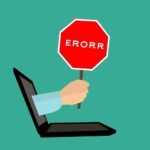Can “they” put a lien on me?
If you have debts you can’t pay, that’s a critical question.
The man sitting across the desk from me owed a fistful of taxes. He proposed to transfer his interest in the family home to save the house from the tax lien which was filed against him.
He thought that the lien on the house would vanish once the home wasn’t in his name any longer.
And that sort of follows from the idea that the lien is “on” the person.
But that’s not how liens work.
Liens are creatures of law: whether you think about them as barnacles, leaches, or ticks, the idea is the same.
They attach to assets and and once attached, follow the asset wherever it goes.
Liens on property
Liens are interests in the property owned by a person against whom a lien has been filed.
The lienholder has rights in the property. Those rights are different from the rights of the legal owner, but they are powerful still.
The lien operates to carve out a slice out of the affected assets that are owned by the person who owes money in favor of the creditor. The lien creates collateral for payment of the debt.
Using tax liens as an example, the lien attaches to all the property that the taxpayer owns at the time the lien was filed. It attaches, as well, to everything the person acquires afterward, so long as the debt underlying the lien is unsatisfied.
Like being a barnacle, it attaches itself to the property and it stays with the property for the life of the debt. It usually entitles the lien holder to take action to sell the asset for payment of the debt.
Liens after property transfer
My client with unpaid taxes didn’t understand that once the lien attached to the family home, it would stay with the home until the taxes were paid. If he deeded the home to his wife, she would take the house subject to the lien.
The lien just rides along, unaffected by the transfer of title.
The lien holder, of course, wants to be paid. So if a person who has a lien outstanding wants to sell liened property, the lien holder will often release the lien as to that property in exchange for payment, in full or in part, of the debt secured by the lien.
How liens are created
Liens are not created willy nilly. The law regulates just how someone else gets an interest in your property.
Liens can be created voluntarily. When you grant a deed of trust or a mortgage on your home, you voluntarily give your creditor a lien on the property to secure repayment.
Liens can be created by judgments. A judicial lien results from a judgment against you for money entered by a court .
Finally, liens can be created by statute. For instance, the Internal Revenue Code authorizes the IRS to record a lien for unpaid taxes. Neither consent nor judicial involvement is required. It’s a statutory lien, created by the law.
Death of a lien
Liens usually become void when the debt they secure is paid or no longer enforceable. Tax liens expire when the tax they secure reaches the statute of limitations on collections.
Some judgment liens are avoidable in bankruptcy. But absent avoidance, a lien that attached to assets when a bankruptcy is filed continues to be a charge on that property even after discharge.
But, to my client’s great regret, just taking the liened property out of your name does not defeat the lien.
More on wiping out liens:
Eliminate judgment liens in bankruptcy
Avoid underwater mortgage liens
Wipe out taxes and liens in Chapter 13
Image: © mariusz szczygie – Fotolia.com






